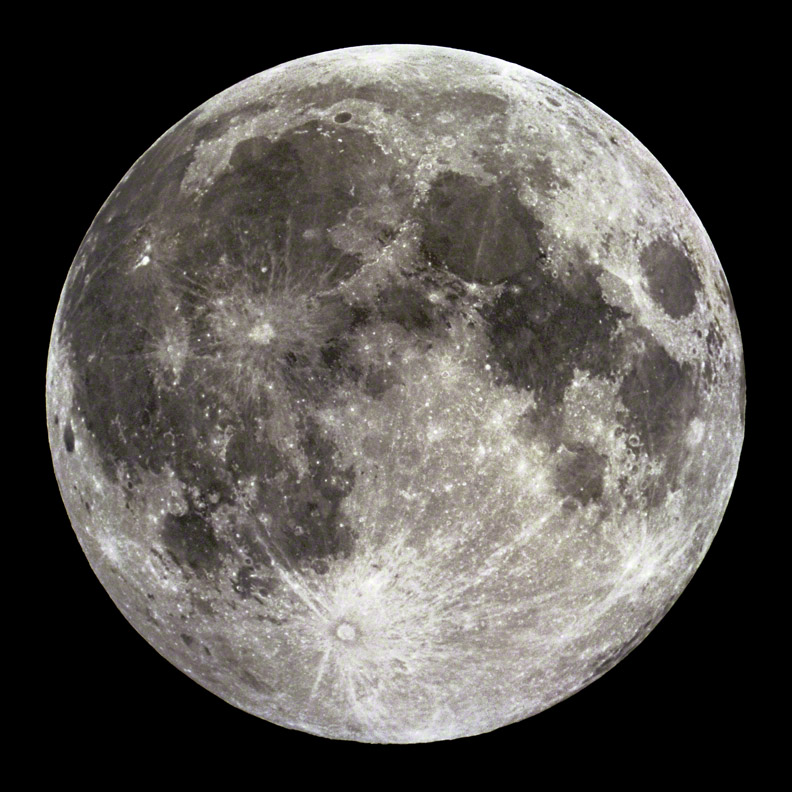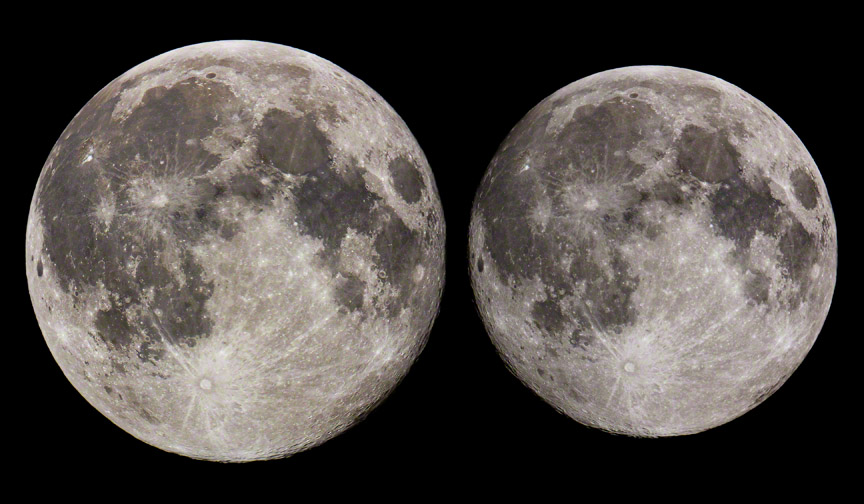

| 
|

Full Moon on March 12, 1998. A few minutes after this image was taken, a partial (penumbral) eclipse of the moon started, so this full moon was very close to 100% full.
Astro-Physics 155mm (6.1 inch) refractor at f14. Two 1/60th second exposures on Kodak Royal Gold 100 color negative film. Photographed from northern New Jersey. ©1998
Apparent Size Differences


The two images of the full moon immediately above show how much the apparent size of the moon changes in different months. Both were shot using the same telescope and camera set up the same way. Because the shape of the moon's orbit is an ellipse, the moon's distance from earth changes as it orbits. A full moon near the closest point in its orbit (the perigee) appears larger than a full moon near the farthest point in its orbit (the apogee).
Left image: the moon near perigee at 2014-08-10 9:52 p.m. EDT. The moon was 357,011 km away and appeared 33' 28" wide on the sky.
Right image: the moon near apogee at 2016-05-20 9:00 p.m. EDT. The moon was 404,202 km away and appeared 29' 34" wide on the sky.
Both images were 1/640 seconds at ASA 400 using a Canon 40D through an Astro-Physics 155mm refractor at f7.1 from northern New Jersey. ©2016
| |||||||||||||||||
|
Astrophotography Books – Astronomy Books |








